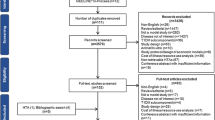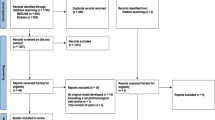Abstract
Type 2 diabetes mellitus (T2DM) is a common disorder that is estimated to affect approximately 100 million people worldwide. Forecasts have suggested a substantial increase in incidence, mainly in Asia, Africa and North America. Thus, an increasing number of people with diabetes-related complications will have to be cared for in the future. This development will be a major health problem for the people affected, as well as a major health economic challenge for many countries. Thiazolidinediones represent a new class of drugs with a novel mechanism of action that addresses the root cause of T2DM. Their mode of action targets the core defect of T2DM, namely, insulin resistance. One of these drugs, pioglitazone, was recently approved by the Swedish authorities. To evaluate the cost effectiveness of this new drug, a published mathematical simulation model was used. This model was adapted to Swedish conditions, and local Swedish unit costs were put into the model. Modelling is necessary when performing economic evaluations in diabetes because of the complexity of the disease and its long time horizon. The cost-effectiveness analyses showed that the cost per life-year gained with pioglitazone combination therapy compared with current treatment ranged from 37 000 Swedish kronor (SEK) to SEK149 000. Although there is no threshold value for cost effectiveness in Sweden, the values presented would normally be regarded as cost effective in the Swedish healthcare system. Modelling studies are a good starting point, but long-term naturalistic studies are needed to establish the cost effectiveness of these new drugs.







Similar content being viewed by others
References
Zimmet P, McCarty D. The NIDDM epidemic: global estimates and projections. IDF Bulletin 1995; 40: 8–16
King H, Aubert RE, Herman WH. Global burden of diabetes, 1995–2025: prevalence, numerical estimates, and projections. Diabetes Care 1998; 21 (9): 1414–31
Jönsson B, Smith U. Good diabetes control is worthwhile. Lakartidningen 1997; 94 (34): 2803–4
UKPDS Group. Effect of intensive blood glucose control with metformin on complications in overweight patients with type 2 diabetes (UKPDS 34). Lancet 1998; 352: 854–65
Stratton IM, Adler AI, Neil HA, et al. Association of glycaemia with macrovascular and microvascular complications of type 2 diabetes (UKPDS 35): prospective observational study. BMJ 2000 12; 321 (7258): 405–12
Jönsson B. Revealing the cost of type 2 diabetes in Europe. Diabetologia. In press 2002
Henriksson F, Jönsson B. Diabetes: the cost of illness in Sweden. J Int Med 1998; 244: 461–8
Henriksson F, Agardh C-D, Berne B, et al. Direct medical costs for patients with type 2 diabetes in Sweden. J Int Med 2000; 248: 387–96
Yearbook of health and medical care 2000. Stockholm: The National Board of Health and Welfare, 2001
Axelsson R. Hälso- och sjukvårdsadministration i organisationsteoretisk belysning. Lund: Studentlitteratur, 1998
The Swedish Federation of County Councils. Stockholm: Information about the County Councils, 2001
National Social Insurance Board. Stockholm: National Social Insurance Board, 2000. Report no. 1999: 10
National Social Insurance Board [online]. Available from: http://www.rfv.se [Accessed 2001 May 10]
Palmer AJ, Weiss C, Sendi PP, et al. The cost-effectiveness of different management strategies for Type I diabetes: a Swiss perspective. Diabetologia 2000; 43: 13–26
Coyle D, Lee KM, O’Brien BJ. The role of models within economic analysis: focus on type 2 diabetes mellitus. Pharmacoeconomics 2002; 20 Suppl. 1: 11–9
UKPDS Group. UK Prospective Diabetes Study 16. Overview of 6 years’ therapy of type II diabetes: a progressive disease. Diabetes 1995; 44: 1249–58
Johansen K. Efficacy of metformin in the treatment of NIDDM: meta-analysis. Diabetes Care 1999; 22 (1): 33–7
DRG prices on Internet [online]. Available from http://www.spri.se/e/drg/ [Accessed 2000 Aug 12]
Zethreaus N. A computer model to analyse the cost-effectiveness of hormone replacement therapy — a revised version. Stockholm: Stockholm School of Economics, 2000. EFI research paper: 368
Zethraeus N, Molin T, Henriksson P, et al. Costs of coronary heart disease and stroke: the case of Sweden. J Intern Med 1999; 246: 151–9
Apelqvist J, Ragnarson-Tennvall G, Larsson J, et al. Long-term costs for foot ulcers in diabetic patients in a multidisciplinary setting. Foot Ankle Int 1995; 16: 388–94
Federation of County Councils. Cost per patient, physician visit, bed-day etc in 1996 [in Swedish]. Stockholm: Federation of County Councils, 1999
Business agreement for the South Health Care Region. Regional prices 1999 [in Swedish]. Malmö: Södra Samverkansnämnden, 1999
National and regional health care in 1998 [in Swedish]. Linköping: The County Council in Östergötland, 1998
Price list 1998. Inpatient care and outpatient care [in Swedish]. Uppsala: Akademiska University Hospital, 1998
Price list 1998. Huddinge: Labmedicin at Huddinge University Hospital and Söder Hospital, 1998
FASS. Pharmaceuticals in Sweden (Pharmaceutical lexicon) [in Swedish]. Stockholm: Läkemedelsinformation AB, 1999
Hjortsberg C, Svarvar P. Cost comparison between hospital inpatient care and advanced home care: end-stage cancer [in Swedish]. Lund: The Institute for Health Economics, 1999. IHE Working Paper 1999: 2
Statistics Sweden. Available from URL: http://www.scb.se
Katz ML, Rosen HR. Microeconomics. 2nd ed. Boston: Richard D. Irwine Inc., 1994
Ralston S, Mera R, Wisner C, et al. Quality of life and treatment satisfaction of type 2 diabetic patients: the CODE-2 experience [poster no. 865]. Presented at the European Association for the Study of Diabetes (EASD); 2000 Sep 21; Jerusalem
Newhouse JP. US and UK health economics: two disciplines separated by a common language? Health Econ 1998; 7: 79–92
Tengs TO, Adams ME, Pliskin JS, et al. Five-hundred life-saving interventions and their cost-effectiveness. Risk Anal 1995; 15 (3): 369–90
Acknowledgements
I would like to thank Peter Lindgren for help with the collection of Swedish data, Laura Kahn and Micole Reinman for administrative help and two anonymous reviewers for valuable comments. The study was sponsored by Eli Lilly and Company.
Author information
Authors and Affiliations
Corresponding author
Rights and permissions
About this article
Cite this article
Henriksson, F. Applications of Economic Models in Healthcare. Pharmacoeconomics 20 (Suppl 1), 43–53 (2002). https://doi.org/10.2165/00019053-200220001-00005
Published:
Issue Date:
DOI: https://doi.org/10.2165/00019053-200220001-00005




